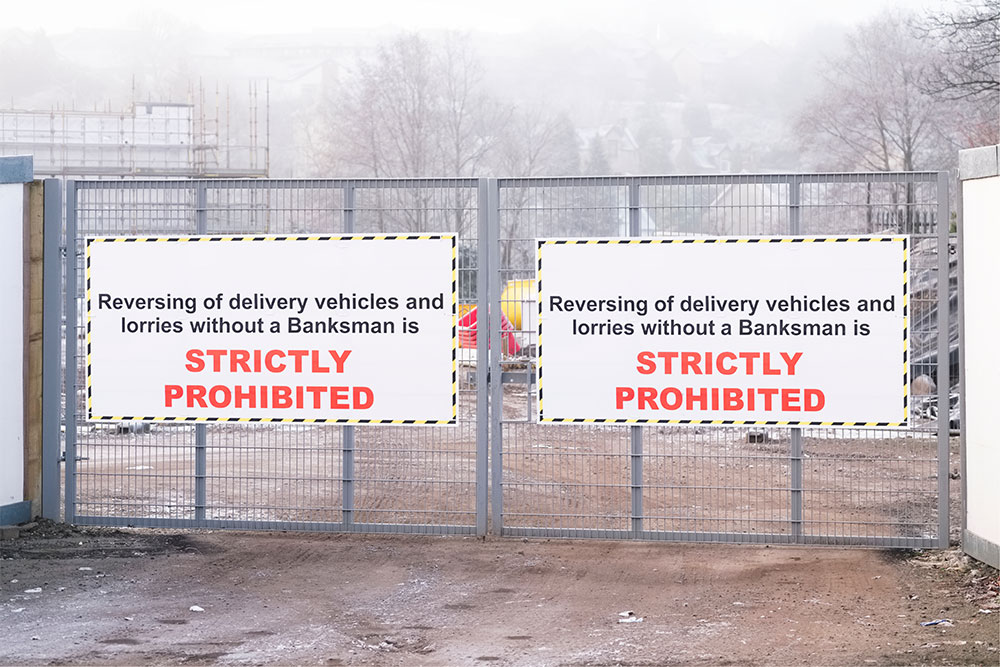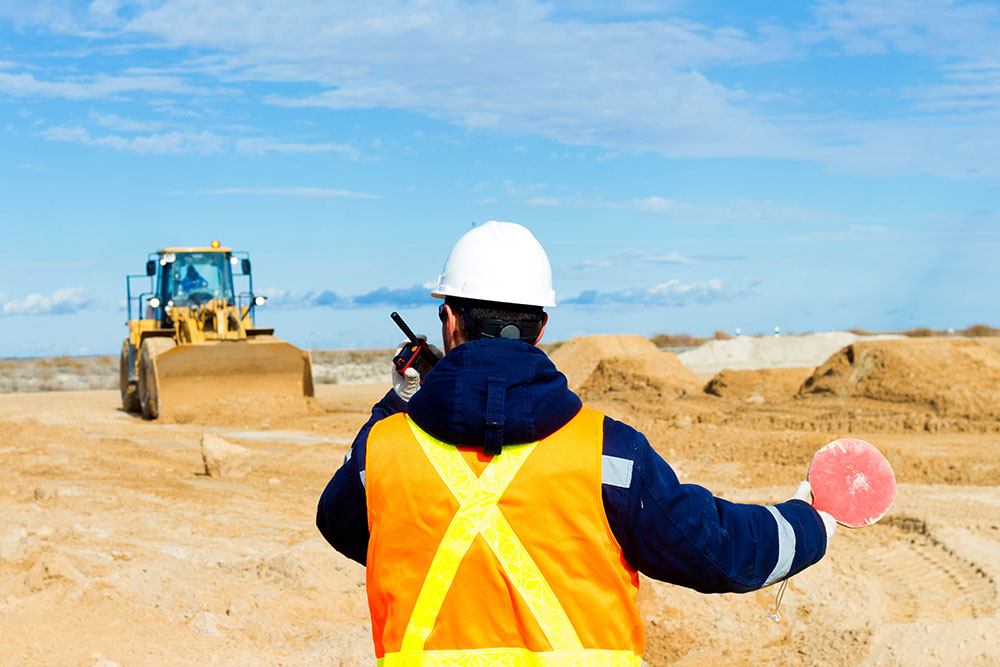
Look at any construction site and you’ll see lots of heavy machinery moving about in pretty restrictive conditions. If it’s not appropriately orchestrated, this complex procession of vehicles can be incredibly hazardous. A banksman is responsible for choreographing the movements of these giant machines to ensure everyone stays safe.
Although it’s a vital position, most people don’t understand the role well. To shed some light on this intriguing profession, we’ll answer the question – what is a banksman? We’ll explain their duties and how one becomes a banksman.
Understanding the Role
So, let’s get to the question right away. What is a banksman? Despite the name, it has nothing to do with financial transactions. Instead of moving money about, a banksman helps heavy vehicles and mobile plants move around safely.
Any vehicle operations on-site present a range of hazards and must be risk-assessed. Poor visibility and a restricted range of movement make it difficult to manoeuvre large vehicles and mobile plants in many work sites. Safely reversing a construction vehicle is even more difficult.
If the risk assessment highlights that other control measures are insufficient, banksmen must be in place. In short, this is a risk control measure to reduce the likelihood or consequences of a site vehicle incident occurring.
They are appointed to work in fixed sites like factories, docks, construction sites or warehouses. But they might also be needed in open-air locations like forests, farms, agricultural areas or public roads.
What’s the Difference Between a Signaller, Traffic Marshal & Banksman?
Sometimes, a banksman is called a signaller or a traffic marshal. Somewhat confusingly, they all have the same role, with different titles.
Another term that you might come across is ‘slinger signaller’. A slinger signaller has a different, although similar, role to a banksman. The difference is that a slinger signaller’s job is to assist in lifting and lowering operations rather than directing vehicle and mobile plant traffic. So, it’s not uncommon for a person to be trained to perform both duties.
What Are a Banksman’s Duties and Responsibilities?
Heavy vehicle and mobile plant operations must be precisely controlled and coordinated to ensure the safety of everyone on site. When other control measures can’t remove all the risks, a banksman has to step in to direct traffic flows.

To do this effectively, they have a range of duties and responsibilities. They don’t get to just stand about in a flashy jacket and a unique hat – although that is part of it.
Apart from hanging about looking authoritative, what is a banksman? They have the following duties and responsibilities:
Providing Guidance to Drivers & Operators
A banksman must guide drivers and operators on manoeuvering construction vehicles safely whenever necessary. They must be in a safe location visible to the driver or operator. A driver or operator must stop operations immediately if they lose sight of them.
Upholding Control Measures
A dynamic risk assessment must be performed on a site before work commences. One of the banksman’s duties is to ensure all control measures have been implemented and adhered to. These control measures can include speed limits, pedestrian areas and vehicle routes.
They should also fully understand all the risks drivers and operators face, such as limited visibility. If they believe the control measures aren’t sufficient, they must halt operations and report any issues. The banksman is also responsible for ensuring the drivers, operators and themselves follow all systems of work.
Using Signalling to Direct Drivers and Operators
A banksman can’t just rely on their voice to give directions to drivers and operators. Heavy machinery and mobile plant operations are reasonably loud, after all. They must use both verbal commands and hand signals to direct operations. These commands and hand signals are under the Health and Safety (Signs and Signals) Regulations 1996. It should be noted that drivers and operators can also agree on a different set of commands and signals if they wish.

How to Become a Banksman
Some people take an apprenticeship position or sign up for a specific college course.
You’ll need to ensure you understand plant operations and all the types of vehicles and mobile plants used. On-site work experience is highly recommended. You must also have completed training specific to the industry and your work sites.
Is There a Banksman Qualification?
There isn’t a dedicated course that you can take to become qualified. Despite this oversight, there are qualifications you can get that will help you in your quest to become a banksman. You may need training for a Construction Skills Certification Scheme (CSCS) card. You can also complete T-Levels or college courses to gain applicable vocational skills.
These courses and training will help show you’re competent and able to answer the question, what is a banksman?
Banksman Skills, Knowledge & Experience
Banksmen must demonstrate that they are competent to perform their duties. To prove competence, they must have the knowledge, skills and experience to perform their role effectively.
They will always need specific training from their employer. This usually entails both formal training and on-site work experience under the supervision of a more experienced banksman.
Job-specific training should provide information on:
- The site location, including traffic and pedestrian routes
- Site-specific conditions like restricted access and overhead cables
- Speed limits, loading and parking areas, and driving procedures
- All vehicles and mobile plants to be used
- Duty holders and supervisors
- Any visibility aids, such as reversing alarms or mirrors, that are to be used
- Procedures to report risks or accidents
Banksmen must also understand all relevant health and safety legislation covering the mobile plants and vehicles used. They must understand how the mobile plant and vehicle operations can be managed safely. Finally, a bankman must know how to use all pre-agreed verbal commands and hand signals. This type of training isn’t site-specific, so it can be provided off-site.
How to Access Online Training to Learn a Banksman’s Duties
If you’re intrigued about becoming a banksman, you’ll need to gain the right skills, knowledge and experience.
Our Banksman and Traffic Marshal Training course provides a comprehensive overview of the duties and responsibilities.
You can complete this online course in segments at any time you like. Fully assured by the International Institute of Risk and Safety Management (IIRSM), this course will put you on the path to becoming a banksman.
























































































































































































































































































































































































































































































































































































































































































































































